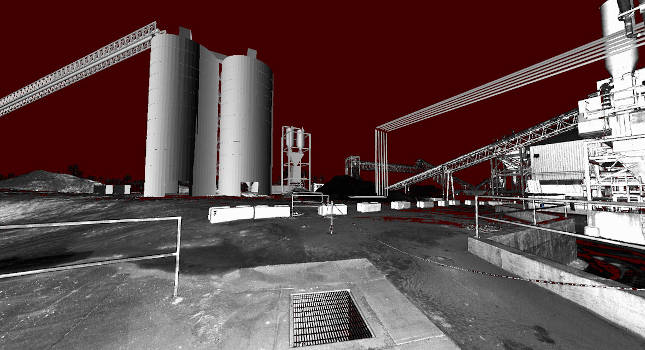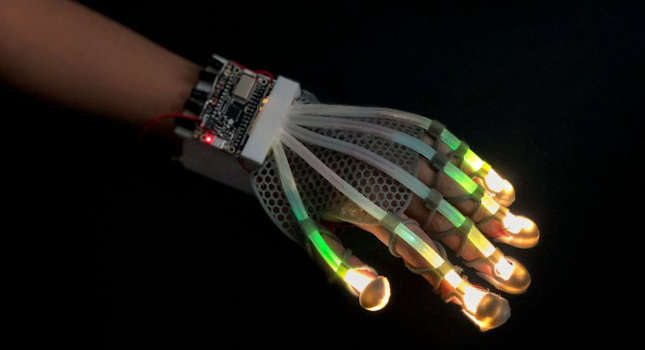Across applications, inductive proximity sensors improve production quality with fast, long lasting and reliable operation
Production quality and speed are two requirements in today’s fast-paced automation environments. Inductive proximity sensing can help ensure both, with digital and analog versions available to suit different needs.
Inductive proximity sensors employ electronic circuitry within a coil, which emits a radio frequency (RF) signal that creates an electromagnetic field. When a metallic object enters into this field, it causes a disturbance that the sensor detects. This disturbance is actually a measurable change in inductive reactance within the sensor’s field. The sensor’s output can be detected by a PLC, which can be programmed to indicate that a necessary operation is complete.
A key advantage of inductive proximity sensors is that they have no moving parts. Their non-contact design ensures that their longevity does not depend on the number of operations they perform. Mechanical sensors such as limit switches, which conversely rely on contact with the target object in order to activate, have an increased likelihood of mechanical fatigue and eventual failure.
Inductive proximity sensors are specially designed to deliver exceptionally long operational life with a sealed design that does not allow moisture or contamination to enter the device. Most inductive proximity sensors can withstand harsh plant environments and temporary submersion under water. Some are even rated IP68 and IP69K to withstand longer immersion periods and high-pressure spray. While inductive proximity sensors cost a bit more than mechanical sensors, they can save users money overall by practically eliminating replacement costs and improving production accuracy.
The sensors also offer dependable operation and exceptional accuracy — with some delivering a hysteresis as low as 0.05 millimeters — helping manufacturers maintain optimal production quality, even with tiny metal components and at fast production speeds. Inductive proximity sensors are available in a broad range of housing sizes — as small as 3 millimeters, and styles to accommodate various target object inspection needs — from a flat housing for die stamping applications to a ring-style for part ejection.
Applications
From industrial automation to mobile vehicles to defense applications, inductive proximity sensors can be used in virtually any industry. However, they are most commonly used for sensing part-in-place in metal component assembly. This allows manufacturers to identify production rejects early in the process and divert rejects from the line, saving valuable production time and resources. For example, inductive proximity sensors may be used to detect that a pin is in place. They can also be used to detect that a door is shut on a critical machine or whether a pallet carriage is full of stacked cartons or empty.
Since the majority of assembly operations require only part presence/absence detection, standard inductive proximity sensors employing digital outputs are used most frequently. These sensors are inherently analog devices, but the digital variety incorporates a threshold for when the sensor is “on” or “off,” delivering simple operation and faster response times. For example, if a sensor is configured to turn on when a metal object comes within 5 millimeters of the sensing face, the sensor will send a signal to indicate the object is present — but the same signal will be sent whether the object is the full distance away or if it is touching the sensor.
Inductive analog sensors
For complex inspection and positioning applications, inductive linear analog sensors provide a more detailed solution. Instead of using a digital output restricted to an “on” or “off” response, these analog sensors are essentially always on — determining not whether an object is present, but if the product is correctly sized or fabricated to meet the proper bend radius.
Using the above example, rather than simply activating if a metal object is present within that 5-millimeter sensing field, an inductive linear analog sensor will determine how far away the object is. The signal is linear (within a specific range) so that the output produces actual measurements, advising users of an object’s position, size or other specifics.
While inductive linear analog sensors have a slightly slower response time than their digital counterparts, by providing quantitative data, this type of sensor is an ideal solution for affirming that products are assembled correctly. For example, inductive linear analog sensors can determine if an automotive component is the correct thickness in chassis construction, or if a tab is bent to the correct angle in die stamping applications.
To sense non-ferrous metals with analog sensors, users often must adjust the operating distance. Along with requiring extra labor costs for reinstalling and configuring sensors for each new metal, when these sensors are used for detecting non-ferrous components, overall sensing performance often suffers.
One cutting-edge technology involves using what is called a material detection sensor: an analog sensor that can detect both ferrous and non-ferrous metals at the same distance. The caveat is that this sensor is best used for applications where the ferrous and non-ferrous targets are of similar size. Otherwise, the sensor may interpret a small piece of steel to be the same as a large piece of copper, since both would produce the same amount of interference in the electromagnetic field.
Whether digital or analog, inductive proximity sensors can deliver reliable, accurate results with fast response times and long lasting operation, helping improve production quality and speed. By selecting the appropriate sensor to deliver critical application information — whether it is part presence/absence or quantitative data — users can optimize their automation lines while saving significant time and cost in the long run.
Production quality and speed are two requirements in today’s fast-paced automation environments. Inductive proximity sensing can help ensure both, with digital and analog versions available to suit different needs.
Inductive proximity sensors employ electronic circuitry within a coil, which emits a radio frequency signal that creates an electromagnetic field. When a metallic object enters into this field, it causes a disturbance that the sensor detects. This disturbance is actually a measurable change in inductive reactance within the sensor’s field. The sensor’s output can be detected by a PLC, which can be programmed to indicate that a necessary operation is complete.
A key advantage of inductive proximity sensors is that they have no moving parts. Their non-contact design ensures that their longevity does not depend on the number of operations they perform. Mechanical sensors such as limit switches, which conversely rely on contact with the target object in order to activate, have an increased likelihood of mechanical fatigue and eventual failure.
Inductive proximity sensors are specially designed to deliver exceptionally long operational life with a sealed design that does not allow moisture or contamination to enter the device. Most inductive proximity sensors can withstand harsh plant environments and temporary submersion under water. Some are even rated IP68 and IP69K to withstand longer immersion periods and high-pressure spray. While inductive proximity sensors cost a bit more than mechanical sensors, they can save users money overall by practically eliminating replacement costs and improving production accuracy.
The sensors also offer dependable operation and exceptional accuracy — with some delivering a hysteresis as low as 0.05 millimeters — helping manufacturers maintain optimal production quality, even with tiny metal components and at fast production speeds. Inductive proximity sensors are available in a broad range of housing sizes — as small as 3 millimeters, and styles to accommodate various target object inspection needs — from a flat housing for die stamping applications to a ring-style for part ejection.
Applications
From industrial automation to mobile vehicles to defense applications, inductive proximity sensors can be used in virtually any industry. However, they are most commonly used for sensing part-in-place in metal component assembly. This allows manufacturers to identify production rejects early in the process and divert rejects from the line, saving valuable production time and resources. For example, inductive proximity sensors may be used to detect that a pin is in place. They can also be used to detect that a door is shut on a critical machine or whether a pallet carriage is full of stacked cartons or empty.
Since the majority of assembly operations require only part presence/absence detection, standard inductive proximity sensors employing digital outputs are used most frequently. These sensors are inherently analog devices, but the digital variety incorporates a threshold for when the sensor is “on” or “off,” delivering simple operation and faster response times. For example, if a sensor is configured to turn on when a metal object comes within 5 millimeters of the sensing face, the sensor will send a signal to indicate the object is present — but the same signal will be sent whether the object is the full distance away or if it is touching the sensor.
Inductive analog sensors
For complex inspection and positioning applications, inductive linear analog sensors provide a more detailed solution. Instead of using a digital output restricted to an “on” or “off” response, these analog sensors are essentially always on — determining not whether an object is present, but if the product is correctly sized or fabricated to meet the proper bend radius.
Using the above example, rather than simply activating if a metal object is present within that 5-millimeter sensing field, an inductive linear analog sensor will determine how far away the object is. The signal is linear (within a specific range) so that the output produces actual measurements, advising users of an object’s position, size or other specifics.
While inductive linear analog sensors have a slightly slower response time than their digital counterparts, by providing quantitative data, this type of sensor is an ideal solution for affirming that products are assembled correctly. For example, inductive linear analog sensors can determine if an automotive component is the correct thickness in chassis construction, or if a tab is bent to the correct angle in die stamping applications.
To sense non-ferrous metals with analog sensors, users often must adjust the operating distance. Along with requiring extra labor costs for reinstalling and configuring sensors for each new metal, when these sensors are used for detecting non-ferrous components, overall sensing performance often suffers.
One cutting-edge technology involves using what is called a material detection sensor: an analog sensor that can detect both ferrous and non-ferrous metals at the same distance. The caveat is that this sensor is best used for applications where the ferrous and non-ferrous targets are of similar size. Otherwise, the sensor may interpret a small piece of steel to be the same as a large piece of copper, since both would produce the same amount of interference in the electromagnetic field.
Whether digital or analog, inductive proximity sensors can deliver reliable, accurate results with fast response times and long lasting operation, helping improve production quality and speed. By selecting the appropriate sensor to deliver critical application information — whether it is part presence/absence or quantitative data — users can optimize their automation lines while saving significant time and cost in the long run.
Author Information
Tony Udelhoven is the director of TURCK ’s Sensor Division. He has 30 years of industry experience, with 11 years at TURCK working in sales and product management.



